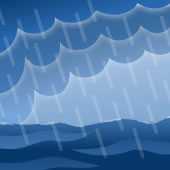STORM, FLOOD, AND HURRICANE RESPONSE

Guidance on Personal Protective Equipment and Clothing for Flood Cleanup Workers
The National Institute for Occupational Safety and Health (NIOSH) provides the following guidelines and warnings to flood cleanup workers. The hazards in flood waters are likely variable and can include sewage, household chemicals and cleaning solutions, petroleum products, hazardous industrial chemicals, pesticides, and flammable liquids. Workers must also be aware of dangers from physical hazards such as obstacles covered by flood waters (storm debris, depressions, drainage openings, ground erosion) and from displaced reptiles or other animals.
Workers and volunteers involved with flood cleanup should avoid direct skin contact with flood waters if possible and through the use of appropriate PPE and clothing. In most instances, the selection of PPE will be dependent on site specific conditions, hazards, and tasks; the list below provides guidance on PPE and clothing for flood response workers:
- Electrically insulated, watertight boots with steel shank, toe, and insole. Tennis shoes or sneakers should not be worn because they will transfer contamination and will not prevent punctures, bites, or crush injuries. Hip waders may be appropriate to help prevent contact with flood waters;
- Heavy, waterproof, cut-resistant work gloves. Other types of protective gloves may be required if handling identified material hazards;
- Goggles, safety glasses with side shields or full face shields. Sun/glare-protective lenses may be needed in some work settings;
- Soft hat or other protective head cover. Wear an American National Standards Institute (ANSI) rated hardhat if there is any danger of falling debris or electrical hazards;
- Hearing protection (when working in an environment with any noise that you must shout over to be heard);
- Comfortable, form fitting, light weight clothing including long pants and a long sleeved shirt or coveralls;
- Under some work conditions, NIOSH approved respirators may be necessary (e.g., for exposures to mold-contaminated materials/environments, or other recognized chemical, physical, or biological hazards).
Additional PPE, respiratory protection, or clothing may be required when specific exposure hazards are identified or expected at the work site. In some instances, the protective ensemble components (garment, boots and gloves) may need to be impervious to contaminated flood or other site-specific chemical, physical, or biological hazards. Waders should be cleaned with soap and water and air dried between uses. In all instances, workers are advised to wash their hands with soap and clean water, especially before eating or drinking. Alcohol-based hand sanitizers can be used if soap and water are not available. Protect any cuts or abrasions with waterproof gloves and dressings. The use of insect repellant, sun block and lip balm may also be required for some work environments. Drink plenty of bottled water and take frequent rest breaks to avoid overexertion.
- Page last reviewed: August 12, 2013
- Page last updated: June 18, 2010
- Content source:
- National Institute for Occupational Safety and Health Office of the Director


 ShareCompartir
ShareCompartir